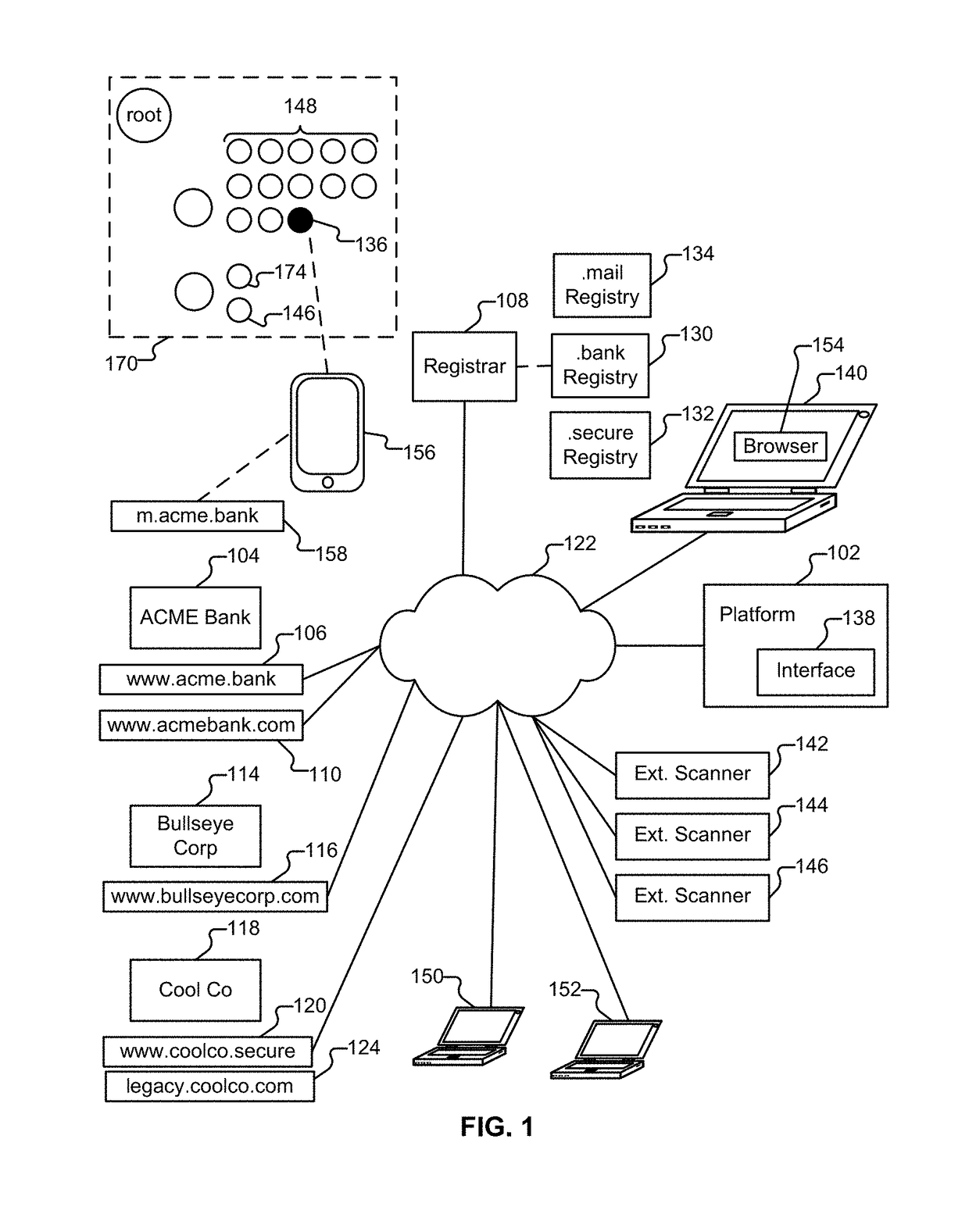Assessing a computing resource for compliance with a computing resource policy regime specification
a computing resource and policy regime technology, applied in the direction of electrical equipment, digital transmission, data switching networks, etc., can solve the problems of difficult to determine whether the new server is in compliance with applicable policies, difficult to know when an existing server made available a service it did, and difficult to enforce policies
- Summary
- Abstract
- Description
- Claims
- Application Information
AI Technical Summary
Benefits of technology
Problems solved by technology
Method used
Image
Examples
example processes
[0053]The following are various examples of processes performed in conjunction with various components of platform 102.
Creating / Editing Policy Regimes
[0054]The following is an example of a process that can be performed (e.g., by an administrator of a customer of platform 102) to set up a new policy regime or make modifications to an existing policy regime. In the following example, suppose Charlie, an administrator at Cool Co, is interacting with platform 102 on behalf of Cool Co. In this example, Cool Co's .secure computing resources are already subject to the .secure policy regime (a default template that is stored in policy database 240 and accessible to all customers of platform 102). Suppose Charlie would like to configure a different regime to be applied to a set of Cool Co's legacy servers that do not contain critical data and are not reachable at a coolco.secure subdomain, but are instead accessible via legacy.coolco.com. Note that in the following example Charlie is able to...
example regime -
Example Regime-.Secure
A. Network Policy
[0059]1. Must provide Route Origin Authorizations (ROA) for AS's hosting .secure hosts (rfc6482).
[0060]2. Must provide BGPSEC signed route updates for AS path validation (draft-ietf-sidr-bgpsec-protocol-07). BGPSEC mandates a single suite of cryptographic algorithms due to a need for global agreement: ECDSAP256SHA256.
[0061]3. Must provide DNSSEC signed records within the .secure DNS zone. Appropriate signing algorithms include: RSASHA1, RSASHA1-NSEC3-SHA1, RSASHA256, RSASHA512, ECDSAP256SHA256, and ECDSAP384SHA384.
[0062]4. Must take steps towards minimizing DNS amplification DDoS attacks from DNS servers within .secure.[0063]a. Must not offer recursive resolution by caching DNS servers for requests from unauthorized hosts.[0064]b. Must not offer recursive resolution by authoritative DNS servers.[0065]c. May provide response rate limiting for authoritative DNS servers.
[0066]5. Must not offer zone transfers to unauthorized hosts.
[0067]6. Must fil...
PUM
 Login to View More
Login to View More Abstract
Description
Claims
Application Information
 Login to View More
Login to View More - R&D
- Intellectual Property
- Life Sciences
- Materials
- Tech Scout
- Unparalleled Data Quality
- Higher Quality Content
- 60% Fewer Hallucinations
Browse by: Latest US Patents, China's latest patents, Technical Efficacy Thesaurus, Application Domain, Technology Topic, Popular Technical Reports.
© 2025 PatSnap. All rights reserved.Legal|Privacy policy|Modern Slavery Act Transparency Statement|Sitemap|About US| Contact US: help@patsnap.com



